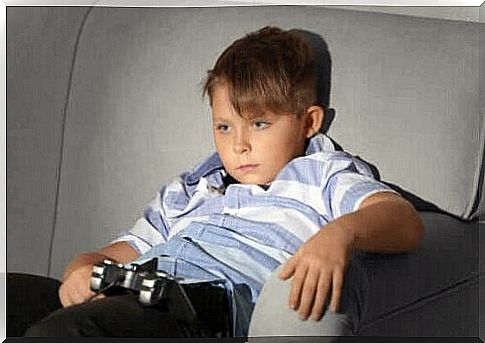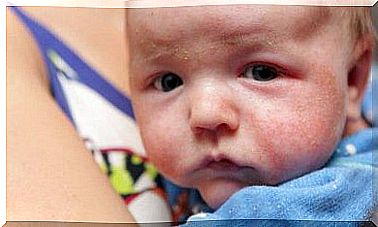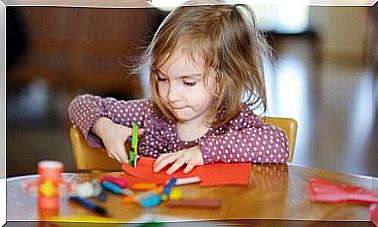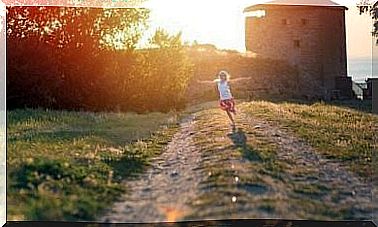How To Prevent An Inactive Lifestyle In Children

An inactive lifestyle in children is a growing problem that puts their mental and physical health at risk. One of the primary reasons behind this phenomenon is the excessive use of technology.
This is evident in reports, such as the one issued by the Canadian Office of Public Health, in which only 1 in 10 children complete the recommended amount of physical activity for their age.
It is no secret that an inactive lifestyle has a negative impact on our health. However, according to data from the World Health Organization (WHO), almost 85% of the population do not engage in any form of physical activity at all. If you do not want your children to be a part of this dangerous statistic, you can try these strategies.
“In 1995, the WHO classified obesity as a disease. At present, it is considered to be an epidemic in both children and adults. Children who are overweight or obese participate less in physical activity and and more in inactive activities. This kind of lifestyle can be the primary reason for the limited motor patterns they present. ”
–Igor Cigarroa, Carla Sarqui, Rafael Zapata-Lamana–
Tips to prevent an inactive lifestyle in children
- Find activities they enjoy. You do not have to write them down to a competing sport. It is enough that they regularly swim, bike or go to a dance class. Help them find the physical activity they enjoy the most.

- Find something that is appropriate for your children’s age. In the early years, the motivation to exercise will be fun with the family. Over time, children’s preferences will change and they may begin to choose for themselves.
- Limit time in front of the screen. Whether it’s watching TV, writing messages or playing a video game, time periods in front of the screen should be limited. Replace these activities with walks, games and relays.
- Remember that you are a role model. The biggest influence on your children in the early years is you. You need to make sure you include exercise as a fundamental part of your daily routine and spend time sharing, talking and having fun as a family.
- Set goals. Start with short periods of time and simple activities that your children can easily do. With time and practice, you can increase the duration and intensity. Achieving small goals will motivate them to stick to this healthy habit.
- Have a plan B for rainy days. It is easy to exercise outside to make its positive effects even more powerful and combat an inactive lifestyle. However, you can have a room or another place in the house where you can move freely when the weather is bad.
- Understand their pace and uncertainties. Avoid forcing your kids to act like high performance athletes. You should also be aware that not all children have the same abilities. Appreciate the differences in your children and learn how to motivate them.
The benefits of physical activity
- Lowers the risk of diabetes, heart disease, cancer and osteoporosis
- Gives a positive mood
- Higher self-esteem
- Better sleep quality
- Lowers the risk of anxiety and depression
Some dangers of an inactive lifestyle in children
- Sudden mood swings due to inactivity. People who spend a lot of time in one place or activity tend to develop mental disorders.
- Risk of cancer. Staying seated for long periods without exercising increases the likelihood of developing colon and lung cancer, as well as endometriosis.

- Childhood obesity is rising all over the world. This is largely due to an inactive lifestyle and poor eating habits. Obesity can cause cardiovascular problems and diabetes.
- Problems with the development of muscles and bones. An inactive lifestyle in children can cause the joints and muscles to become weak due to lack of exercise. Children who do not exercise tend to have problems with the spine, neck, lower extremities and muscle tone.
- Circulatory diseases. Staying in the same position for long periods at a time can restrict blood circulation around the body. Over time, the veins will deteriorate and their ability to function properly will decrease. This is called venous insufficiency, and it can become a more serious problem, such as varicose veins and pulmonary embolisms.
- Reduced cerebral function. Both at school and at home, children should stay active and change their position often. This keeps their brain alert and in shape to produce ideas.
Finally…
It is a task for parents and educators to motivate children’s interest in physical activity. Much of children’s physical and intellectual development depends on it.
Get them involved in sports from a young age so they can build this important, healthy habit. Guide them in the process and also take good care of your own health.









